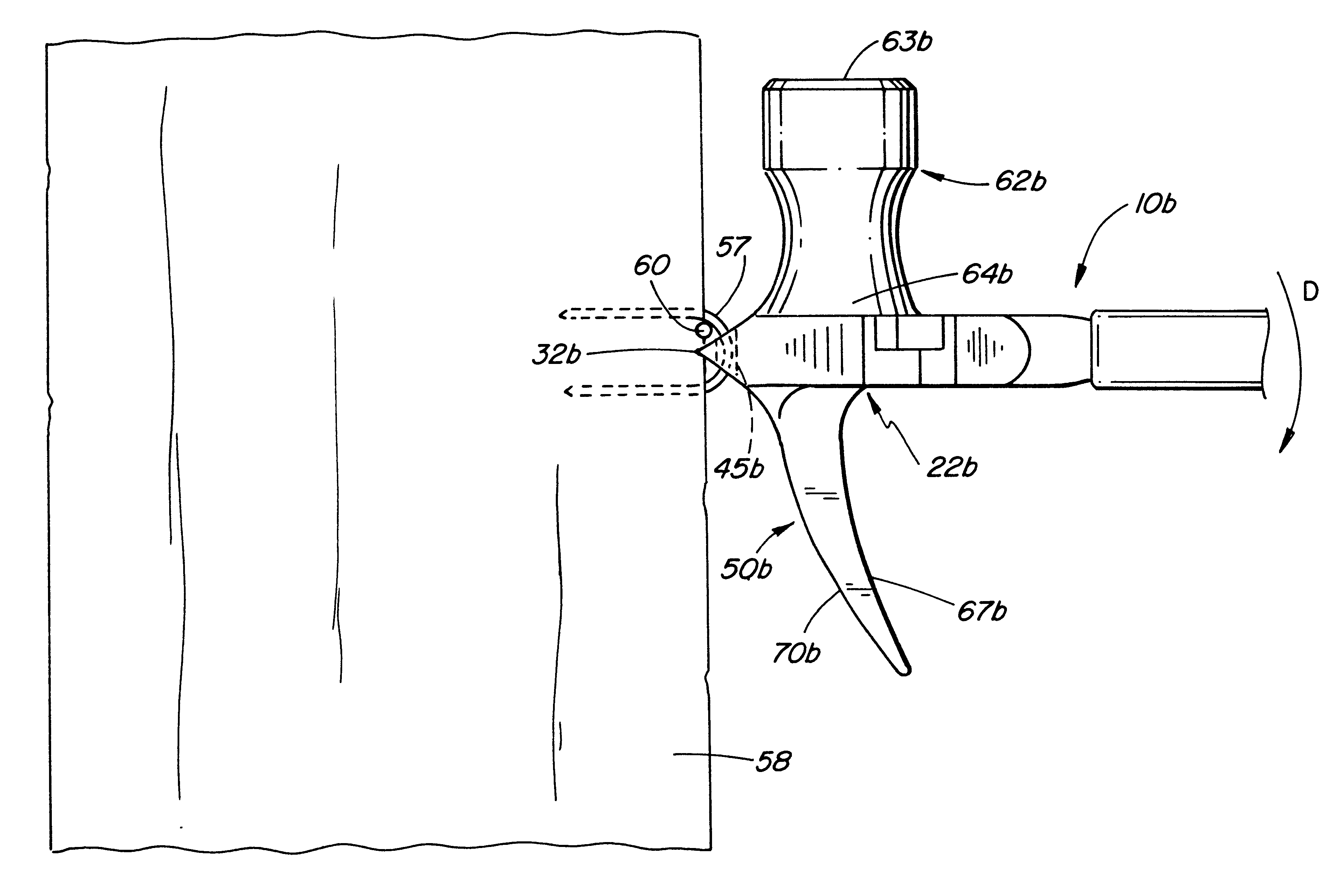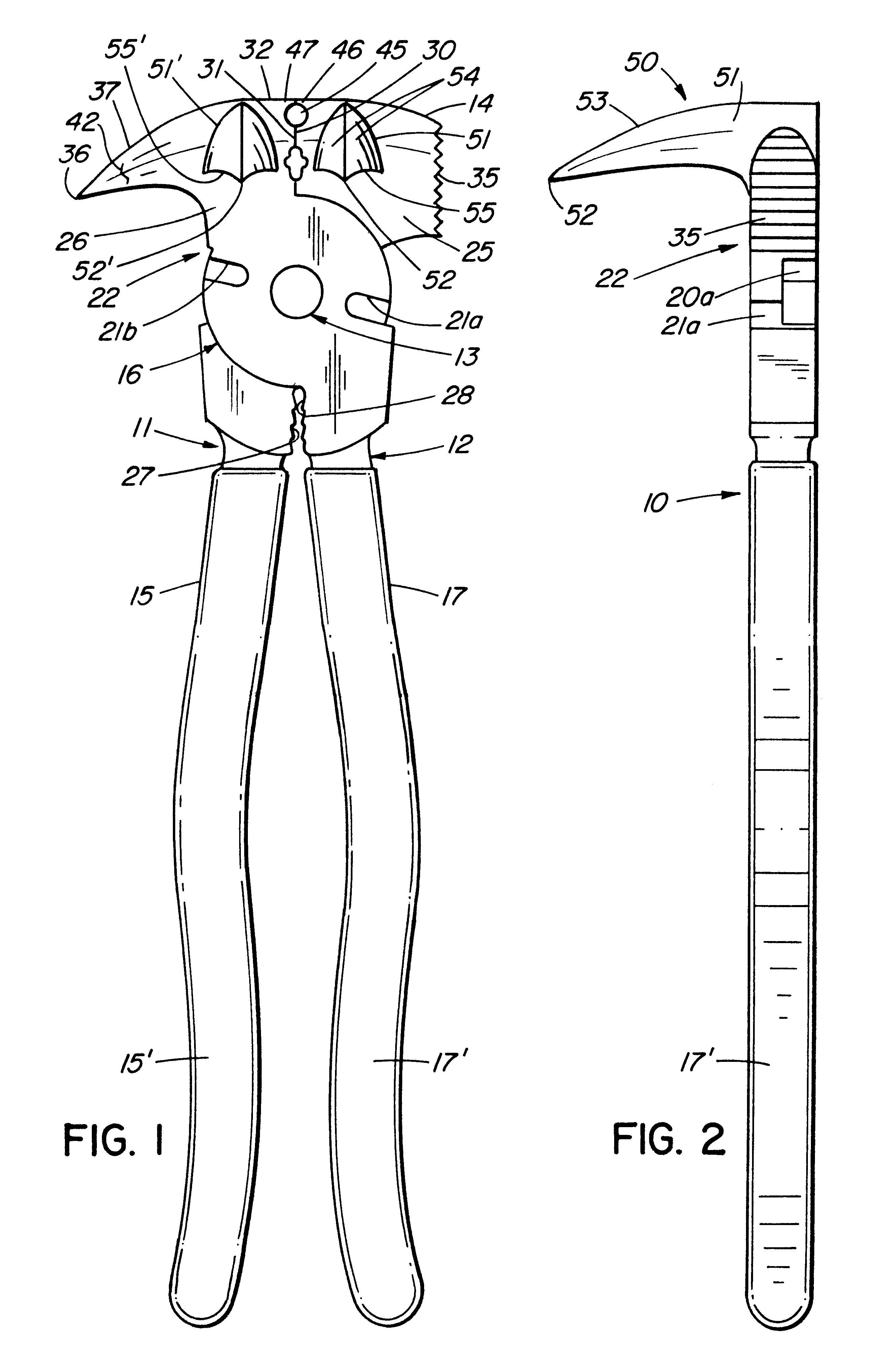Fastener pulling tool
a technology of fastener and tool, which is applied in the direction of nail extractor, multi-purpose tool, pliers, etc., can solve the problems of staple bending, post breaking, and difficulty in removing staples
- Summary
- Abstract
- Description
- Claims
- Application Information
AI Technical Summary
Problems solved by technology
Method used
Image
Examples
Embodiment Construction
In the drawings, reference numbers denoting parts of the structure correspond to the reference numbers used herein to describe like parts, and reference number 10 generally denotes one embodiment of the present invention in the form of a fencing plier. As is common to the design of fencing pliers, the tool 10, hereinafter referred to as a plier, consists of two elongated members 11 and 12 connected together in a scissor fashion by way of a pivot means 13 which is closer to the upper end of the fencing plier. It should be appreciated that while the plier is generally used in any orientation, for the sake of convenience, reference is made to the jaw or head end of the plier, as is shown in FIG. 1, as being the upper end of the fencing plier 10.
The elongated member 11 is normally formed as an integral unit, such as by casting, and includes a jaw portion 14 and a handle portion 15, and similarly the elongated member 12 includes a jaw portion 16 and a handle portion 17 formed integrally ...
PUM
 Login to View More
Login to View More Abstract
Description
Claims
Application Information
 Login to View More
Login to View More - R&D
- Intellectual Property
- Life Sciences
- Materials
- Tech Scout
- Unparalleled Data Quality
- Higher Quality Content
- 60% Fewer Hallucinations
Browse by: Latest US Patents, China's latest patents, Technical Efficacy Thesaurus, Application Domain, Technology Topic, Popular Technical Reports.
© 2025 PatSnap. All rights reserved.Legal|Privacy policy|Modern Slavery Act Transparency Statement|Sitemap|About US| Contact US: help@patsnap.com



